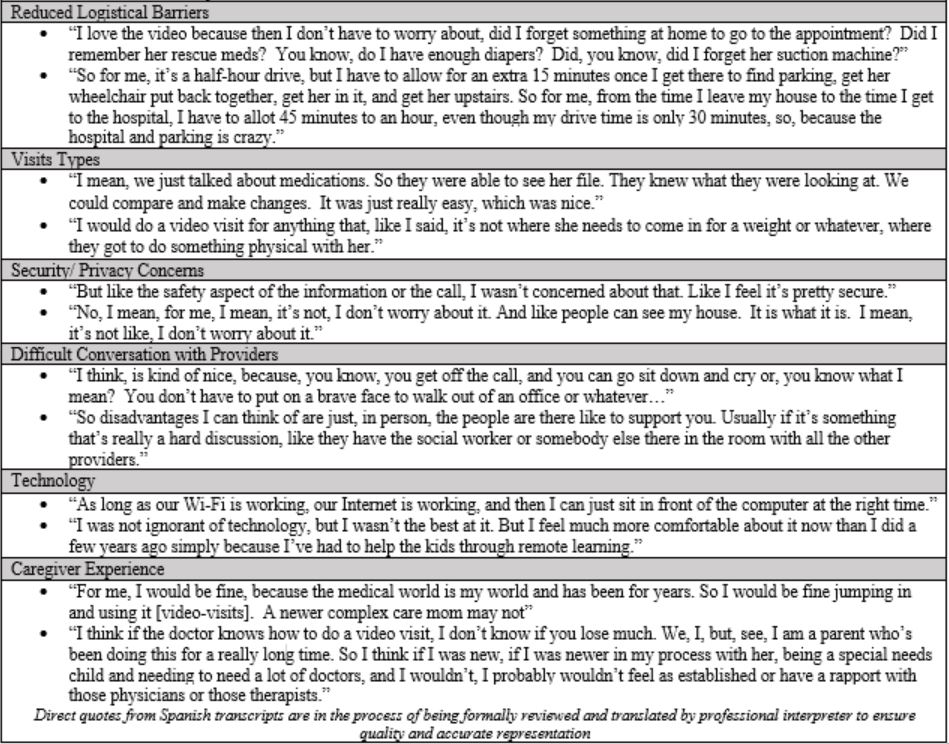Children with Chronic Conditions
Children with Chronic Conditions 2
290 - Benefits and Barriers of Telemedicine Utilization in Children with Medical Complexity: A Qualitative Study on Parent and Caregiver Perceptions
Publication Number: 290.204
- MP
Marie Pfarr, MD (she/her/hers)
Assistant Professor
Childrens Hospital of Alabama
Vestavia Hills, Alabama, United States
Presenting Author(s)
Background:
Telemedicine offers an opportunity to improve care coordination and access to care for children with medical complexity (CMC). In order to better understand factors that facilitate and hinder telemedicine use, it is paramount to capture caregiver perspective on telemedicine.
Objective: To examine the benefits and barriers of telemedicine (“video-visits”) utilization on caregivers of CMC using qualitative methodology.
Design/Methods: We conducted semi-structured interviews with 17 CMC caregivers, four of which were Spanish speakers. Caregivers had the option to participate in the interview virtually or in-person. Three coders, including a CMC research family partner, analyzed the English interview transcripts. Two native Spanish speakers analyzed the Spanish transcripts directly to ensure accurate representation and understanding of the interviews. Using an iterative approach, codes were developed and themes were identified.
Results:
Sixteen interviews were conducted virtually and one (Spanish) was conducted in-person. Themes across caregivers included positive feelings about telemedicine, as it reduced logistical barriers associated with in person visits (equipment needs, transportation/gas price, weather, time away from school/work) (Table 1). Caregivers identified visits that were conducive to telemedicine, including medication related visits. Visits that necessitated a physical exam, such as an assessment of skin findings, were felt to be better done in person. Caregivers did not express significant security or privacy concerns related to video visits or a physician seeing inside their homes. Several caregivers described the benefits of being in a comfortable home environment when having difficult discussions with providers, while other felt that an in person connection was better for these types of discussions. Majority of English speaking caregivers felt comfortable navigating the technology associated with telemedicine, although some expressed difficulties with stable internet connection. Spanish speaking caregivers reflected being less comfortable and having less experience with telemedicine. Several caregivers noted that comfort with telemedicine utilization may depend on the experience of the caregiver themselves.
Conclusion(s): Caregivers shared several benefits of telemedicine, while also noting some limitations. Spanish speaking caregivers expressed discomfort with technology and telemedicine utilization. Further research is needed to identify telemedicine best practices that meet the needs of CMC and their caregivers and explores disparities associated with telemedicine utilization. 
